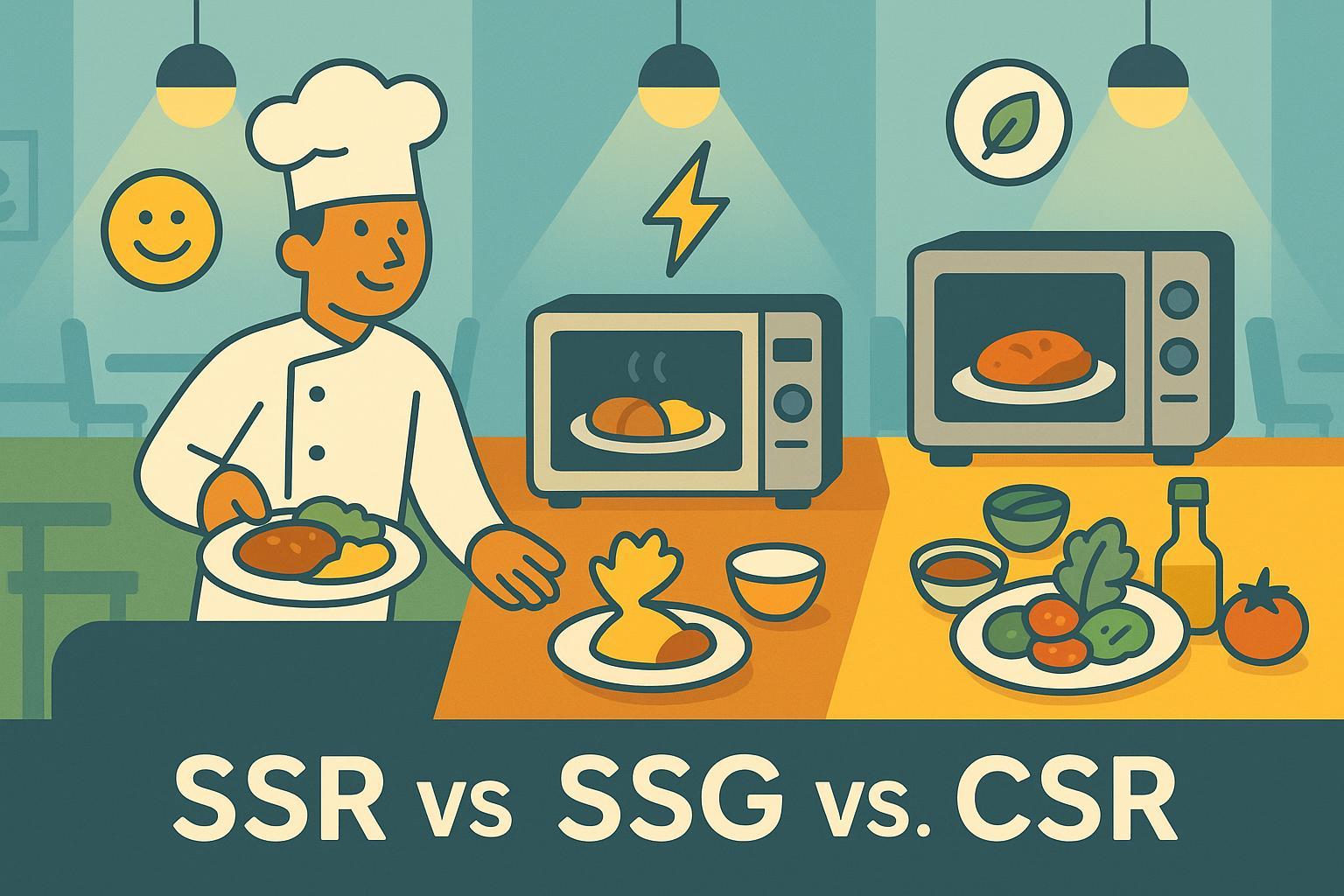What Is SSR? Server-Side Rendering Explained for Business Blogs

The Fresh Meal Metaphor: SSR Simplified
Imagine visiting a restaurant. If each guest receives a freshly prepared meal the moment they order, that's the chef working in real-time—delivering quality, warmth, and custom experience. Now compare that to being served food that was made hours ago and quickly reheated when you arrive. Most diners prefer fresh, right?
In the world of websites, Server-Side Rendering (SSR) is like that freshly cooked meal: the server prepares and delivers a complete, ready-to-consume HTML page for every visitor or search engine bot—instantly and on demand.
SSR Defined (Authoritative Source)
According to MDN Web Docs:
"Server-Side Rendering (SSR) refers to the process where a web server generates and delivers fully-formed HTML for each user request, rather than relying on the browser to construct or update content. This ensures web pages are immediately viewable and crawlable by search engines and social media bots, enhancing discoverability and performance."
Put simply, SSR means the server does all the heavy lifting before the user even sees the webpage.
Why SSR Matters for SEO, Speed, and Shareability
SSR gives you three major business benefits:
Improved SEO: Since SSR serves complete HTML instantly, search engines can easily read and index your pages. Blogs and business sites are discovered and ranked faster.
Fast Initial Load: Visitors experience snappy page loads without waiting for their browsers to build pages from scratch. This keeps bounce rates down and satisfaction up.
Accurate Social Previews: Platforms like Facebook, LinkedIn, or X can grab rich page previews directly, boosting the impact of shared content.
SSR vs. SSG vs. CSR: Which Is Which?
SSR (Server-Side Rendering): Server prepares each page on-the-fly (like a chef cooking fresh for every guest).
SSG (Static Site Generation): Pages are pre-cooked and stored ahead of time; served chilled or quickly reheated when requested. Great for rarely-updated, static sites (Crystallize comparison).
CSR (Client-Side Rendering): Visitor receives basic ingredients; their browser does the work to assemble the actual meal, often leading to delays before seeing content.
Rendering Approach | Metaphor | Best For |
|---|---|---|
SSR | Fresh-cooked meal | SEO-focused, dynamic sites |
SSG | Reheated meal | Static, rarely changed sites |
CSR | DIY ingredients | Rich interaction, single-page apps |
Myths and Misconceptions: Is SSR Always Needed?
Myth: SSR is required for every blog.
Reality: Many business sites thrive with SSG; SSR shines where content updates frequently or fast SEO is critical.
Myth: SSR complicates publishing or breaks WordPress integration.
Reality: Most modern platforms (including WordPress-compatible SaaS tools) balance SSR and SSG for optimal results.
When Should You Choose SSR?
You want your blog or business site to rank fast in Google.
You need rich previews on social media immediately after publishing.
Your content updates regularly—news, event calendars, dynamic landing pages.
Tip: For mostly static content (like About pages or evergreen guides), use SSG. For dynamic or SEO-critical posts, SSR provides the edge.
Related Terms (Expand Your Understanding)
ISR (Incremental Static Regeneration)
Bottom Line: SSR is the chef who delivers your business blog freshly-cooked for every visitor and search engine. It isn’t the only menu item, but for dynamic, discoverable content, it’s often the tastiest choice. Choose wisely—and see your site rise in rankings and reach!

